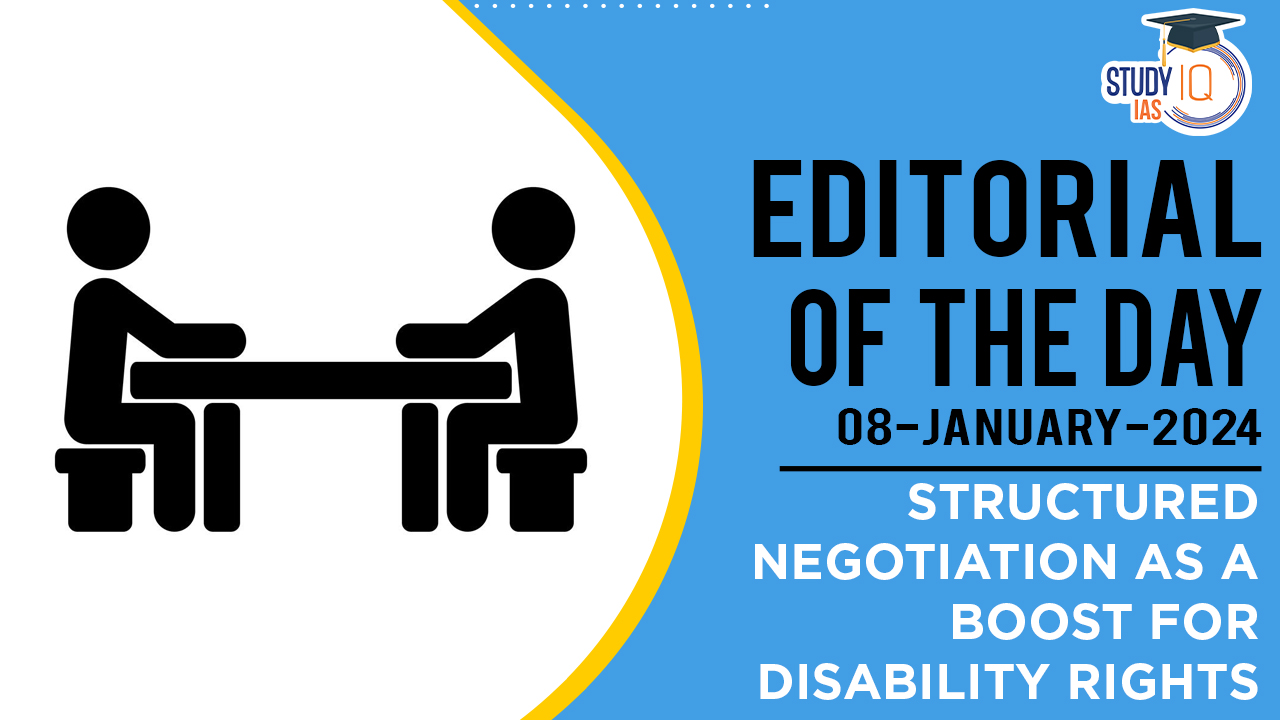Table of Contents
Context: Structured negotiation is gaining traction as an effective, non-litigious dispute resolution method, showing promise for India’s legal system in cases similar to how it has been successfully applied to disability rights in the U.S.
About Structured Negotiation
- Problem-Solving Approach: Structured negotiation is a technique where parties collaboratively discuss and resolve issues outside of court, akin to a round-table discussion.
- Application in Disability Rights: It is particularly effective in enhancing accessibility in areas like websites, machines, and services for people with disabilities.
- Mutual Benefits: This approach is beneficial for all involved; companies avoid legal complications, and individuals with disabilities gain improved access.
- Consensus for Resolution: The method is most effective when all parties are committed to jointly finding solutions, avoiding the hassles of legal proceedings.
We’re now on WhatsApp. Click to Join
Benefits Of Structured Negotiation
- Inclusive Dispute Resolution: Structured negotiation champions disability rights through an inclusive, problem-solving method. It has led major corporations like Walmart and CVS to introduce accessible prescription containers for visually impaired customers.
- Mutual Benefits: This strategy promotes outcomes beneficial to both service providers and those affected by non-compliance.
- S. Case Settlements: In the U.S., the method has a strong track record of effectively resolving disability rights disputes outside of court.
- Institutional Change: It has been pivotal in addressing issues with inaccessible technology and promoting organisational change.
- Encouraging Compliance: Service providers are more likely to comply with social welfare laws when litigation drawbacks are avoided.
India’s Challenges in Structured Negotiation
- Civil Court Delays: India’s civil courts are bogged down with case backlogs and excessive paperwork, complicating the adoption of structured negotiation for disability rights.
- Legislative Empowerment: The Rights of Persons with Disabilities Act, 2016, gives the CCPD authority to tackle non-compliance, yet its effectiveness in resolving accessibility issues is not evident.
- Regulatory Challenges: The CCPD’s directives for accessibility, as in the case of PayTM, can sometimes lead to more barriers, underscoring the challenges of oversight in digital accessibility.
- Digital Accessibility Vigilance: The PayTM incident underscores the crucial need for ongoing vigilance and user engagement to ensure true accessibility, a significant hurdle for structured negotiation in India.
What Should Be Done
- Intensify Monitoring: Ensure solutions remain effective through continuous monitoring and integrating feedback from users.
- Legal Advocacy Enhancement: Build a stronger foundation of legal precedents that are favourable to disability rights to aid structured negotiation.
- Raising Awareness: Educate companies and legal professionals about the advantages of structured negotiation to promote its wider use.
- Authority Utilisation: Make use of the role and powers of the Chief Commissioner for Persons with Disabilities for better compliance enforcement.
- Learning from Global Practices: Analyse and adapt successful structured negotiation strategies from the U.S. to fit the Indian context.


 India to Host First Global Conference on...
India to Host First Global Conference on...
 How Terror Networks Abuse Digital Tools
How Terror Networks Abuse Digital Tools
 United Nations Population Award 2025: Va...
United Nations Population Award 2025: Va...





















